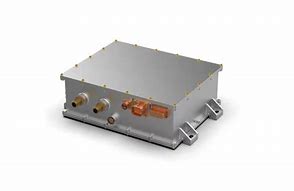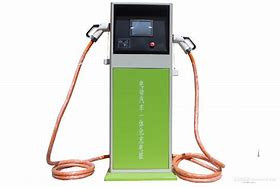In terms of pace and efficiency, your logistics and material handling operations depend on the performance of your forklift fleet. How can you make sure your powered vehicles are operating up to their potential and delivering tangible value?
The answer lies in optimizing not just one part of forklift operations, but many individual processes. One important example: forklift battery charging. If your approach to managing the charge cycle is inefficient, or if your equipment has become outdated, the resulting issues could be slowing down your forklift operations as a whole.
There are a few important steps you can take to deal with battery charging issues. First, you have to take a close look at the role battery charging plays in your forklift operations. Next, it's time to determine what your ideal solution would be and implement it, whether that means refreshing your equipment or even switching to a managed service model for battery usage in general.
The importance of forklift battery charger
When one of your organization's forklifts requires a battery charge, what happens? Is there a charged battery ready to go, or has the battery already been charged before the shift on an opportunity charging or fast charging model?

If technicians haven't designed the system to fit one of these patterns, there may be issues. In some warehouse and loading center settings, forklift vehicles are forced to sit unused for 15 minutes to half an hour waiting for a new battery. This lost time adds up to wasted productivity, squandering the opportunity for extra value-adding work.
While industrial battery charging is just one component of overall forklift operations, which may lead to it being overlooked, it can act as a productivity-lowering choke point if the charge cycle hasn't been planned carefully. An assessment could reveal significant inefficiencies with present systems, pointing to the need for an upgrade.
One important issue to keep in mind when working on battery charging is the match between battery and forklift charger. There is a risk inherent to pairing new batteries with older chargers and vice versa, and every battery should be paired with the correct charger for its internal chemistry.
Older chargers in general come with risk factors, such as the danger of thermal runaway and overcharge. Some companies are still using industrial battery charger systems from 20 or more years ago. These have inferior control systems compared to the latest models, raising the risk of heightened temperatures.
If your organization is one of the logistics companies working with outdated battery charging solutions, it's especially important to assess your power systems and needs, and to look for a better option. Even if your systems are more recent, it can pay to seek out new strategies and technologies custom selected to match your needs.
Ideal approaches to forklift battery charging
Once your company commits to better forklift battery charging, you should also ensure it's using the right charging profile for it at that moment. Needs may change and evolve over time as the scale of your forklift fleet or the speed of operations increases. An option that may have worked for your business in the past may have been replaced by a better approach.

Getting the right profile in place is important for reasons that go beyond pure logistics: Having the ideal charge profile can ensure the batteries reach their maximum usable life span and performance. These factors can be maximized today through the intelligent use of real-time application data, generated by cutting-edge battery charger solutions.
The following are three of the most common versions of forklift battery charging strategies. While they all represent a better approach than a disorganized or unplanned approach, they also all come with their own pros and cons, meaning one will suit your company's logistics needs better than the others.
1. Standard charging / battery room: From an equipment perspective, operating a dedicated battery room requires the greatest level of commitment and investment. The storage racks and charging equipment used in a battery room take up a big footprint. Battery charging on this system involves an 18-20% start rate, and discharged batteries are switched out for fully charged replacements. While some companies are moving away from battery rooms because of their scale, there are some environments where they are still key: Namely, food production and other industries requiring sanitary conditions can separate their battery operations from the main floor.
2. Opportunity charging: Opportunity charging systems are based around the logistics of forklift use. This charge profile starts charging batteries from a 25% charge rate. Charging takes place while the batteries are still attached to the forklifts, when the vehicles are out of service for breaks and other interruptions in service, ensuring fewer extra stoppages in everyday activity.
Next:Top 10 Considerations When Choosing a Forklift Charger
Previous:Forklift Battery Maintenance: Extend the Life of Your Battery
Contact Person: Miss. Kiki
| WhatsApp : | +8617763224709 |
|---|---|
| Skype : | +8617763224709 |
| WeChat : | +8617763224709 |
| Email : | kiki@lifepo4-battery.com |